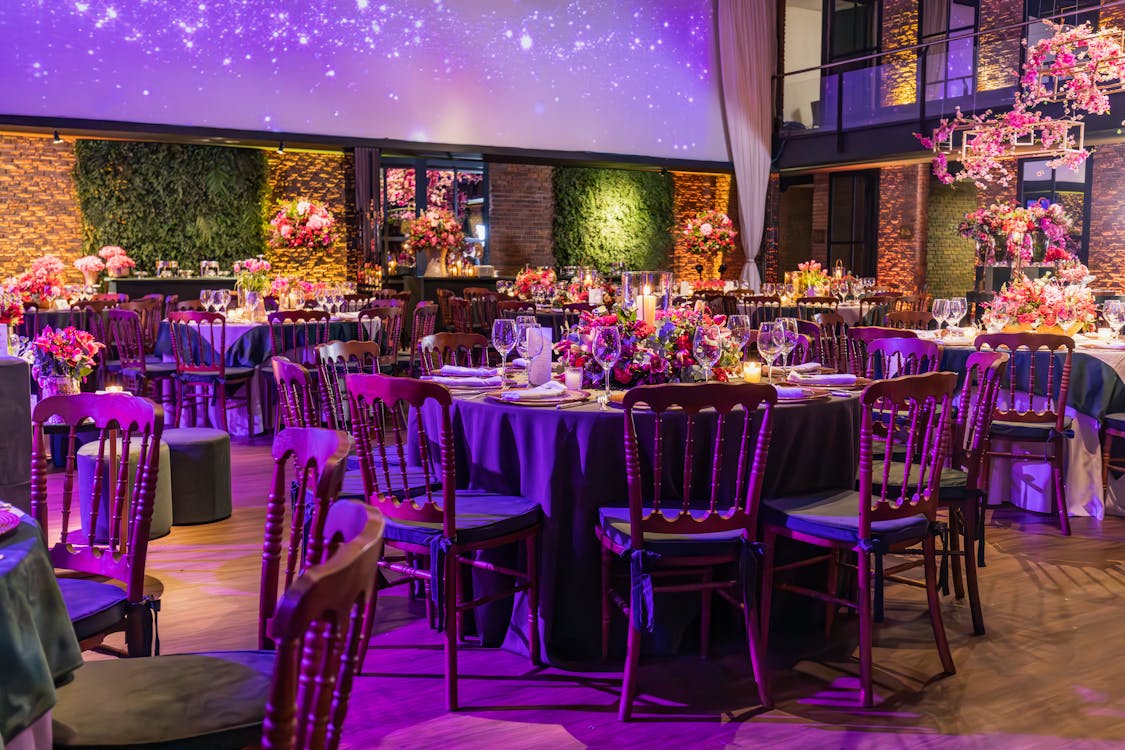When my wife and I started planning our wedding, we thought the most stressful part would be the guest list. Or the budget. Or maybe the weather forecast for that one weekend in June.
We were wrong. It was the table planning.
In Singapore, where weddings are equal parts family reunion and business mixer, assigning guests to tables at your banquet is no small feat. You’re juggling family politics, plus-ones, friend group dynamics and dietary preferences—all while trying to avoid putting your boss next to your cousin who overshares after two glasses of wine.
But take heart. There’s a method to the madness. Here’s how you can plan your banquet tables smoothly, respectfully, and maybe even enjoy the process along the way.
1. Start with the Big Picture: Who’s Coming?
Before you even think about tables, lock in your guest list. Confirm RSVPs as early as possible—especially if you’re aiming for the golden number of 10 people per table (standard for most Chinese banquet setups).
Pro tip: Create a spreadsheet or use tools like Zola or Tably. Group your guests into categories: family (by side), friends, colleagues, childhood pals, your partner’s uni hallmates, etc.
This will make life so much easier later.
2. Prioritise the VIPs
Weddings typically have VIP tables for immediate family, close relatives and sometimes elders like grandparents or the family’s “unofficial matriarch.”
These tables are usually placed near the stage and should be assigned first.
Tip:- Table 1: Bride’s immediate family
- Table 2: Groom’s immediate family
- Table 3: Grandparents/relatives who helped raise you (And if there’s an “Auntie Susan” who basically raised you while your parents worked? She gets a spot too.)
3. Respect Family Dynamics (or Tread Lightly)
If there’s tension between certain relatives (and let’s be honest, most families have some), keep them at separate tables—or ideally, separate corners of the room. You don’t want drama over sharks’ fin soup.
Same goes for divorced parents, estranged cousins, or that one uncle who still holds a grudge from 2013.
What worked for us:
We gave each parent one table to host relatives or friends they were personally close to. It gave them a sense of involvement and helped us avoid tricky groupings.
4. Group Friends by Social Circles
Your JC squad probably doesn’t know your workplace BFFs. Uni friends might not gel with your partner’s running club. So, seat people who know each other (or would enjoy knowing each other).
Think in themes:- The rowdy uni gang? Corner table with easy access to the bar.
- Your introverted book club? Quieter zone, away from the emcee’s [15.Do I Need an Emcee for My Wedding?] speakers.
- The artsy creative types? Near the photo booth—they’ll make it their playground.
- Making tables where only two people know each other. It kills the vibe and no one wants to make small talk for two hours straight.
5. Handle “+1”s With Tact
Some guests will RSVP with a plus-one you’ve never met. If the partner is long-term, try to seat them at the same table as your guest.
But if they’re new—or it’s a “situationship”—don’t stress. You can seat the plus-one at an adjacent table or with other partners. Just try not to isolate them.
And yes, I know what you’re thinking. No, you don’t have to invite every “plus-one” if your budget or layout doesn’t allow for it. But be consistent and explain early.
6. Incorporate Special Considerations
A few thoughtful adjustments go a long way:- Elderly guests: Seat closer to exits or restrooms.
- Families with young kids: Give them space for prams and ideally, near the dessert table.
- Vegetarians or guests with dietary needs: Note their seats clearly for the hotel staff.
Hotels are generally great with accommodating these—just give them enough heads-up.
7. Map It All Out Visually
Use a printed layout or digital tool to drag and drop your tables and guests. Some hotels will give you the actual floor plan, which is super helpful.
Pro tip: Colour-code groups. This makes it easier to visualise where everyone is and spot potential clashes. And always overestimate how long this will take. You’ll thank yourself later.
8. Have a “Buffer Table” Strategy
Last-minute changes will happen. Uncle Tony might fall sick. Your friend might bring a surprise plus-one. The cousin who ghosted your RSVP might show up anyway (classic).
Have a buffer table (or two) with flexible seating arrangements just in case. Ask your banquet manager or hotel coordinator how to manage this without disrupting the dinner flow.
9. Print a Guest List With Table Numbers
On the big day, having a clear guest list with table assignments displayed near the entrance helps everyone. Trust me, it’s better than Auntie Jenny wandering around shouting your Chinese name looking for a seat.
You can also have ushers or hotel staff help guide guests—especially elderly ones.
10. Relax—Perfect Seating Doesn’t Exist
You could spend weeks micromanaging the chart… and someone will still grumble that they don’t like the fish, or that they’re sitting too near the speaker.
It’s okay.
What matters is that you and your partner are surrounded by people who care about you, even if not everyone gets their dream seat.
Final Thoughts
Planning banquet tables is never easy—one part logistics, one part diplomacy and a whole lot of heart. In Singapore, where weddings are both personal and community events, the table map isn’t just about chairs—it’s about relationships.
So give it thought. Give it effort. But don’t let it rob you of the joy of your day.
Because at the end of the night, what people will remember isn’t where they sat. It’s the love in the room, the laughter in the speeches… and whether the dessert was actually mango sago.



Comments